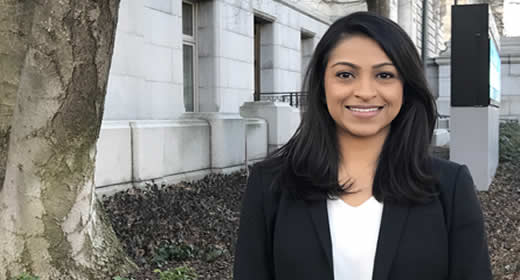
Research by joint-PhD candidate Anita Ravishankar (political science and public policy) on police body-worn cameras (BWCs) was featured in The New York Times’ The Upshot (“A big test of police body cameras defies expectations,” by Amanda Ripley) and Michigan Radio’s The Two-Way (“Body cam study shows no effect on police use of force or citizen complaints,” by Nell Greenfieldboyce) in October.
Ravishankar performed research with The Lab @ DC team in coordination with Washington, DC’s Metropolitan Police Department. The team conducted a seven-month randomized control trial, assigning about 1,000 police officers to wear BWCs and another 1,000 to control. The study—the largest of its kind completed to date—was designed to measure whether the cameras had any effect on the documented uses of force and the number of civilian complaints received, among other outcomes examined.
But when the results were in, the team was surprised. “We found essentially that we could not detect any statistically significant effect of the body-worn cameras,” Ravishankar told NPR.
What does this mean for police departments? “Our experiment suggests that we should recalibrate our expectations of BWCs,” notes The Lab @ DC on their field experiment website. “Law enforcement agencies that are considering adopting BWCs should not expect . . . large-scale shifts in police behavior, solely from the deployment of this technology.”
The team adds that there may be other positive effects of BWCs that the study does not measure: “No single scientific study can provide all the answers to every question we might have about a program or policy.”
“As we design and adopt new policies and programs,” they write, “it’s critical to measure outcomes in order to understand what works—and what doesn’t.”